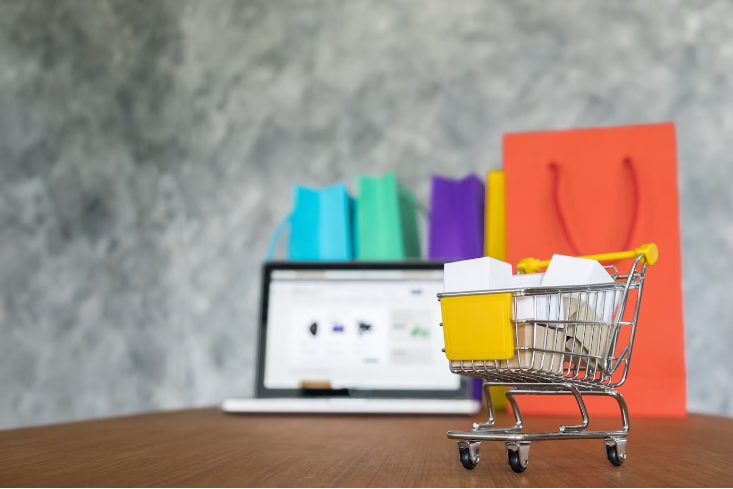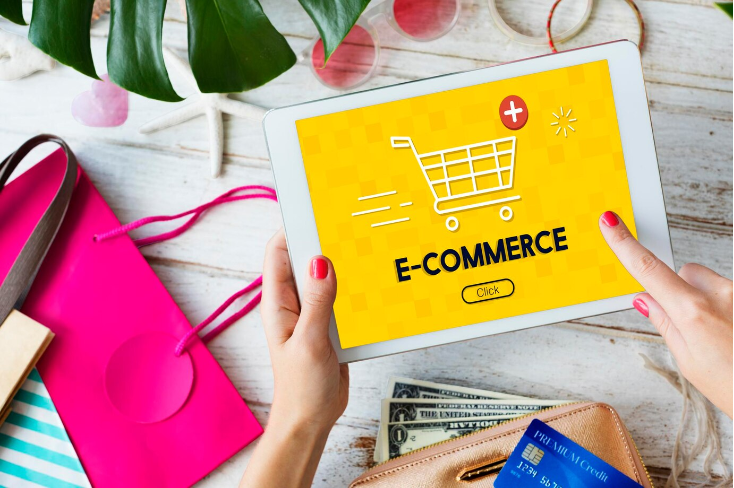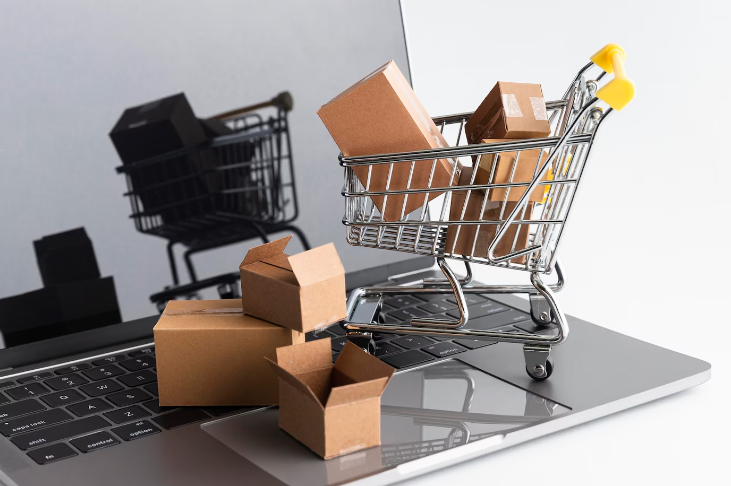Table of Contents
What Is Dropshipping? The Ultimate Guide
Time: Oct 23,2024 Author: SFC Source: www.sendfromchina.com
Dropshipping has emerged as one of the most popular e-commerce business models, offering a low-cost, low-risk way for aspiring entrepreneurs to start selling online without managing inventory or shipping. In 2024, the dropshipping industry continues to thrive, with new technologies and global marketplaces making it easier than ever to get started. Whether you’re a seasoned online seller or just exploring the idea of starting a business, understanding how dropshipping works and how to navigate its challenges is crucial for success.
In this comprehensive guide, we’ll explore everything you need to know about dropshipping, from its advantages and risks to sourcing reliable suppliers, especially from China, a global hub for affordable and diverse products. Let’s dive into the ultimate guide to dropshipping and see how you can build a profitable e-commerce business in 2024.

1. What Is Dropshipping
Dropshipping is a retail fulfillment method where an online store doesn't keep the products it sells in stock. Instead, the store purchases items from a third-party supplier, who then ships the products directly to the customer. As a result, the seller doesn't have to handle the product directly. The business model has surged in popularity due to its low startup costs, minimal risk, and flexible operations.
At its core, dropshipping allows entrepreneurs to sell products without needing to manage inventory or logistics. By acting as a middleman between the supplier and the consumer, you can focus on marketing and customer service while leaving the fulfillment process to your suppliers.
2. Understanding Dropshipping Model

The dropshipping model stands apart from traditional retail in that the seller never physically interacts with the inventory. The entire process works in three straightforward steps:
1. The Customer Places an Order: A customer visits your online store and purchases a product.
2. You Forward the Order to the Supplier: Upon receiving the order, you buy the product from your supplier at a lower price.
3. The Supplier Ships Directly to the Customer: The supplier packages and ships the product directly to the customer under your brand or a neutral one.
This model eliminates the need for managing physical stock, hiring warehouse staff, or dealing with shipping logistics, making it a highly appealing option for new entrepreneurs and small businesses.
Key Players in the Dropshipping Model
1. The Retailer (You): You manage the online store and handle customer interactions.2. The Supplier: They manufacture or source the product and manage shipping.
3. The Customer: The end buyer who purchases the product from your online store.
Each party plays a critical role in ensuring the smooth flow of the dropshipping process, but your role as the retailer is primarily focused on customer acquisition and satisfaction.
3. Why Is Dropshipping So Popular

Dropshipping has exploded in popularity in recent years, particularly with the rise of e-commerce platforms like Shopify, WooCommerce, and Amazon. So, why is dropshipping so widely adopted?
Low Barrier to Entry
One of the most significant advantages of dropshipping is that it requires very little upfront capital. Traditional retail businesses need to invest heavily in stock, warehouses, and employees. Dropshipping, however, requires only an internet connection, a website, and access to suppliers.
Flexibility and Scalability
Dropshipping gives you the freedom to work from anywhere in the world. You can operate your store with nothing more than a laptop, making it a viable option for digital nomads or part-time entrepreneurs. Moreover, since you don't manage stock, scaling your business is easier—you just need to increase marketing efforts or list more products.
Access to a Global Market
Thanks to the internet, dropshipping allows you to tap into a global audience. You can sell products to customers worldwide without worrying about international logistics, as your suppliers will handle that for you.
No Need for Inventory Management
Managing inventory is one of the most challenging aspects of running a traditional retail business. Dropshipping eliminates this headache, as the supplier takes care of all stock and shipping logistics.
4. Pros and Cons of Dropshipping

As appealing as dropshipping is, it has its drawbacks. Let’s break down the pros and cons to give you a clear perspective.
Pros of Dropshipping
Low Startup Costs: You don’t need to invest heavily in inventory, warehouse space, or a large team.Easy to Start: You can start a dropshipping business with minimal technical knowledge and a relatively small financial investment.
Wide Product Range: Since you don’t need to purchase products upfront, you can offer a vast array of products without worrying about storage costs.
Flexibility: You can operate from anywhere and at any time.
Scalability: You can quickly scale your business by listing more products or expanding into new markets.
Cons of Dropshipping
Low Profit Margins: Since suppliers handle logistics and inventory, their pricing may be higher, leaving you with thinner margins.Reliance on Suppliers: If a supplier runs out of stock or fails to deliver on time, it directly affects your business and reputation.
High Competition: Since the barriers to entry are low, many entrepreneurs flock to dropshipping, creating intense competition, especially for popular products.
Limited Control: You have little control over shipping times, product quality, or packaging, which can affect your brand’s reputation.
Customer Service Challenges: Issues like delayed deliveries or incorrect items will fall on you to resolve, even though you don’t handle fulfillment directly.
5. Is Dropshipping Still Profitable in 2024?

The question on many aspiring entrepreneurs' minds: Is dropshipping still a viable business model in 2024? The answer is yes, but with some caveats.
Trends in 2024
While the dropshipping space has become more saturated, it still offers substantial profitability for those who find the right niche and execute effective marketing strategies. Niche products with strong demand, particularly those in underserved markets, can still yield significant profits.
Automation tools, advanced e-commerce platforms, and improved customer service methods have also made it easier to manage a dropshipping business in 2024. However, the key to profitability lies in choosing the right products, suppliers, and marketing strategies.
Adapting to Changing Market Dynamics
To stay competitive, dropshippers in 2024 must adopt strategies such as:- Focusing on a specific niche to differentiate themselves from larger competitors.
- Leveraging social media and influencer marketing for product promotion.
- Using data analytics to understand customer behavior and optimize marketing efforts.
6. Is Dropshipping Legit? Understanding the Risks

A common concern among newcomers is whether dropshipping is a legitimate business model. The short answer is yes—dropshipping is a completely legal and widely recognized e-commerce model. However, like any business, it comes with its risks.
Risks to Consider
Scam Suppliers: Not all suppliers are trustworthy. Some may offer poor-quality products or fail to deliver on time, which can harm your business.Legal Issues: If you’re not careful, you could inadvertently sell copyrighted or trademarked products, leading to legal trouble.
Shipping Delays: Since most dropshipping suppliers are based overseas, shipping times can be long, which can frustrate customers.
Customer Expectations: Managing customer expectations regarding product quality and shipping times is crucial, especially when working with overseas suppliers.
7. Why You Should Consider Dropship from China

Dropshipping from China has gained popularity these years. China is often regarded as the go-to destination for dropshipping suppliers, and for good reason. Chinese manufacturers offer competitive prices, a wide variety of products, and an infrastructure designed for international shipping.
Benefits of Sourcing from China
Low Product Costs: Chinese suppliers typically offer products at a fraction of the cost compared to suppliers in other regions, which allows for higher profit margins.Wide Range of Products: From electronics to clothing, China offers an extensive array of products, giving you more options to meet market demand.
Established Supply Chain: China has a robust manufacturing and logistics network, ensuring that products are produced and shipped efficiently.
OEM Capabilities: Many Chinese suppliers offer OEM (Original Equipment Manufacturer) services, which allow you to brand products as your own, helping you build a unique and recognizable brand.
8. How to Find Reliable China Dropshipping Suppliers

Finding a reliable supplier is one of the most critical steps in building a successful dropshipping business. Here are some strategies to help you find trustworthy suppliers in China.
Use Established Platforms
Platforms like AliExpress, Alibaba, and DHgate are well-known for connecting dropshippers with Chinese suppliers. They provide customer reviews, ratings, and supplier information, helping you vet potential partners before committing.
Check for Certifications
Many reputable Chinese suppliers will have international certifications like ISO 9001 or other quality management certifications. These certifications indicate that the supplier follows specific quality control standards.
Order Samples
Before listing any product, it’s wise to order a sample to check for quality, shipping times, and packaging. This allows you to ensure the supplier can meet your expectations.
Consider Supplier Location
While many dropshipping suppliers are based in China, they may have warehouses in the U.S. or Europe, which can significantly reduce shipping times for your customers.
Negotiate Terms
Once you’ve found a supplier that meets your needs, negotiate the terms of your partnership. Discuss pricing, shipping times, return policies, and branding options to ensure that the supplier aligns with your business goals.
9. FAQs
1. Is dropshipping legal?
Yes, dropshipping is a legitimate business model. However, you should ensure that the products you sell comply with local laws and regulations, particularly regarding trademarks and intellectual property.
2. How much money do I need to start dropshipping?
The startup costs for dropshipping can be minimal, ranging from a few hundred dollars to more, depending on the scale of your operations. You'll need funds for website hosting, marketing, and initial product sourcing.
3. Can I dropship to any country?
Yes, you can dropship globally, but be aware of shipping times, customs regulations, and potential tariffs that can vary between countries.
4. How do I handle returns in dropshipping?
Returns are typically handled by your supplier. Ensure that you have a clear return policy that your customers understand, and communicate with your suppliers about their return processes.
5. Can I brand my dropshipping products?
Yes, many suppliers, especially those in China, offer white-label or OEM services that allow you to add your branding to products.
 Post Views:4081
Post Views:4081
Copyright statement: The copyright of this article belongs to the original author. Please indicate the source for reprinting.
Previous Post
What Is a Fulfillment Center? The Ultimate Guide
Next Post
TAGS
Hot Research
Get a Custom China Fulfillment Solution with FREE Storage for 30 Days
 Want to know about our services, fees or receive a custom quote?
Want to know about our services, fees or receive a custom quote?
 Please fill out the form on the right and we will get back to you within a business day.
Please fill out the form on the right and we will get back to you within a business day.
 The more information you provide, the better our initial response
will be.
The more information you provide, the better our initial response
will be.





 TAGS:
TAGS: